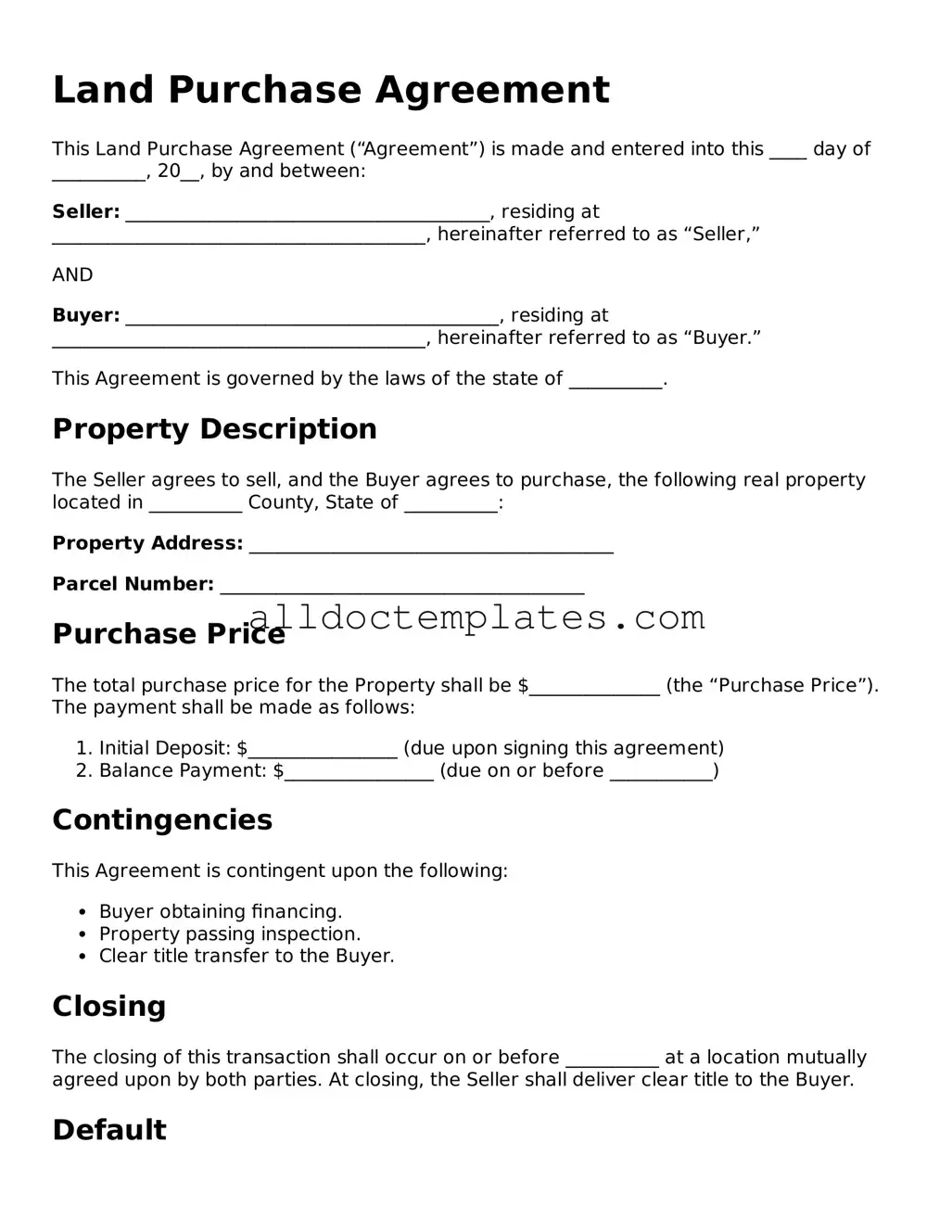Land Purchase Agreement
This Land Purchase Agreement (“Agreement”) is made and entered into this ____ day of __________, 20__, by and between:
Seller: _______________________________________, residing at ________________________________________, hereinafter referred to as “Seller,”
AND
Buyer: ________________________________________, residing at ________________________________________, hereinafter referred to as “Buyer.”
This Agreement is governed by the laws of the state of __________.
Property Description
The Seller agrees to sell, and the Buyer agrees to purchase, the following real property located in __________ County, State of __________:
Property Address: _______________________________________
Parcel Number: _______________________________________
Purchase Price
The total purchase price for the Property shall be $______________ (the “Purchase Price”). The payment shall be made as follows:
- Initial Deposit: $________________ (due upon signing this agreement)
- Balance Payment: $________________ (due on or before ___________)
Contingencies
This Agreement is contingent upon the following:
- Buyer obtaining financing.
- Property passing inspection.
- Clear title transfer to the Buyer.
Closing
The closing of this transaction shall occur on or before __________ at a location mutually agreed upon by both parties. At closing, the Seller shall deliver clear title to the Buyer.
Default
If either party defaults in the performance of any provision in this Agreement, the non-defaulting party shall be entitled to pursue any remedies available at law or in equity.
Governing Law
This Agreement shall be governed by and construed in accordance with the laws of the state of __________.
Signatures
By their signatures below, the parties agree to the terms and conditions of this Agreement:
Seller: _______________________________________
Date: __________
Buyer: _______________________________________
Date: __________
